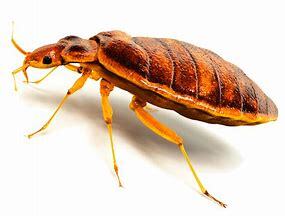|
Is There A Difference between a Bug and an Insect? By Pierre Mouchette | Bits-n-Pieces While it is acceptable to refer to bugs as insects, there is a distinction between the two terms. To make things even more confusing, all bugs are insects, but not all insects are bugs. The difference all boils down to taxonomic order.
What is a Bug? Explaining a bug requires us to brief you on biology 101. We must introduce you to the terminology kingdom, phylum, class, and order to do this. Both insects and bugs fall into the class Insecta, but bugs fall into order Hemiptera. It means that all bugs are a type of insect, but not every kind of insect belongs to the order Hemiptera. Because everyone (even scientists) refers to insects as bugs, the bugs found in order Hemiptera are called “true bugs.” Since true bugs are considered insects, they have many of the same body parts as other insects. For instance, true bugs have an exoskeleton, segmented bodies, and six legs. However, there are some differences. Unlike many insects, true bugs undergo an incomplete metamorphosis: egg, adult-like nymph, and winged adult. Furthermore, true bugs have specialized mouth parts, called stylets, that are shaped like straws or needles. They use their stylets to suck fluid from plants (though some feed on animals). While butterflies and honeybees also have straw-like mouthparts, true bugs' mouths are slightly different. Instead of being retractable, the mouthpart of a true bug is rigid and cannot be rolled up. True bugs include aphids, stink bugs, water bugs, and bed bugs. What is an Insect? By the technical or taxonomic definition, a large group of insects is not a bug, even though we call them bugs. Beetles, ants, moths, cockroaches, bees, flies, and mosquitoes are not considered true bugs since they are not found in the order Hemiptera. Instead, these creepy crawlies are in the order Hymenoptera. Members of this order have different characteristics than their actual bug counterparts. The most crucial difference is their mouths. Rather than a stylet fixed in place, insects in this order have a proboscis that they can retract. Additionally, to confuse you even more, there are several creatures that are neither bugs nor insects. Millipedes, centipedes, scorpions, spiders, and ticks are not bugs or insects. Millipedes are classified as diplopodans due to their double-footed segments. Centipedes are considered Chilopoda because they have one pair of legs per body segment. Lastly, scorpions, spiders, and ticks are characterized by their eight legs and two body parts (a cephalothorax and abdomen), making them arachnids. Dealing with these creepy crawlers can be frustrating and nerve-racking regardless of phylum, class, or order. Comments are closed.
|
Archives
May 2024
|
